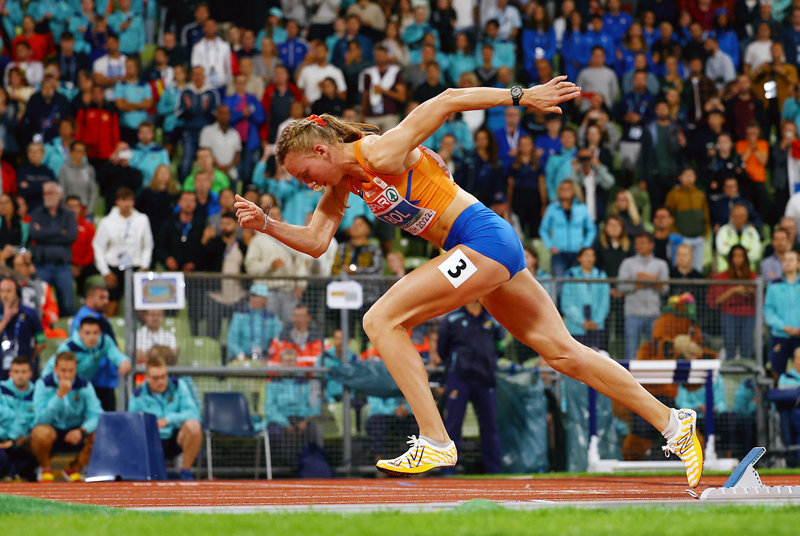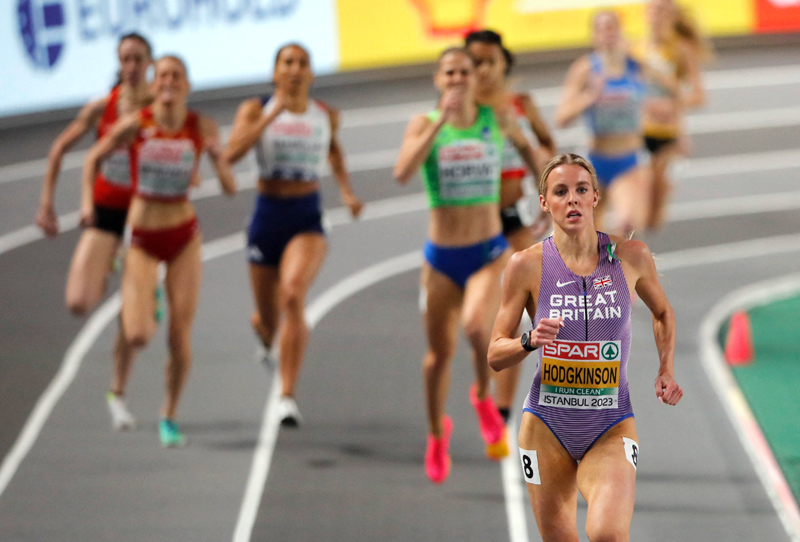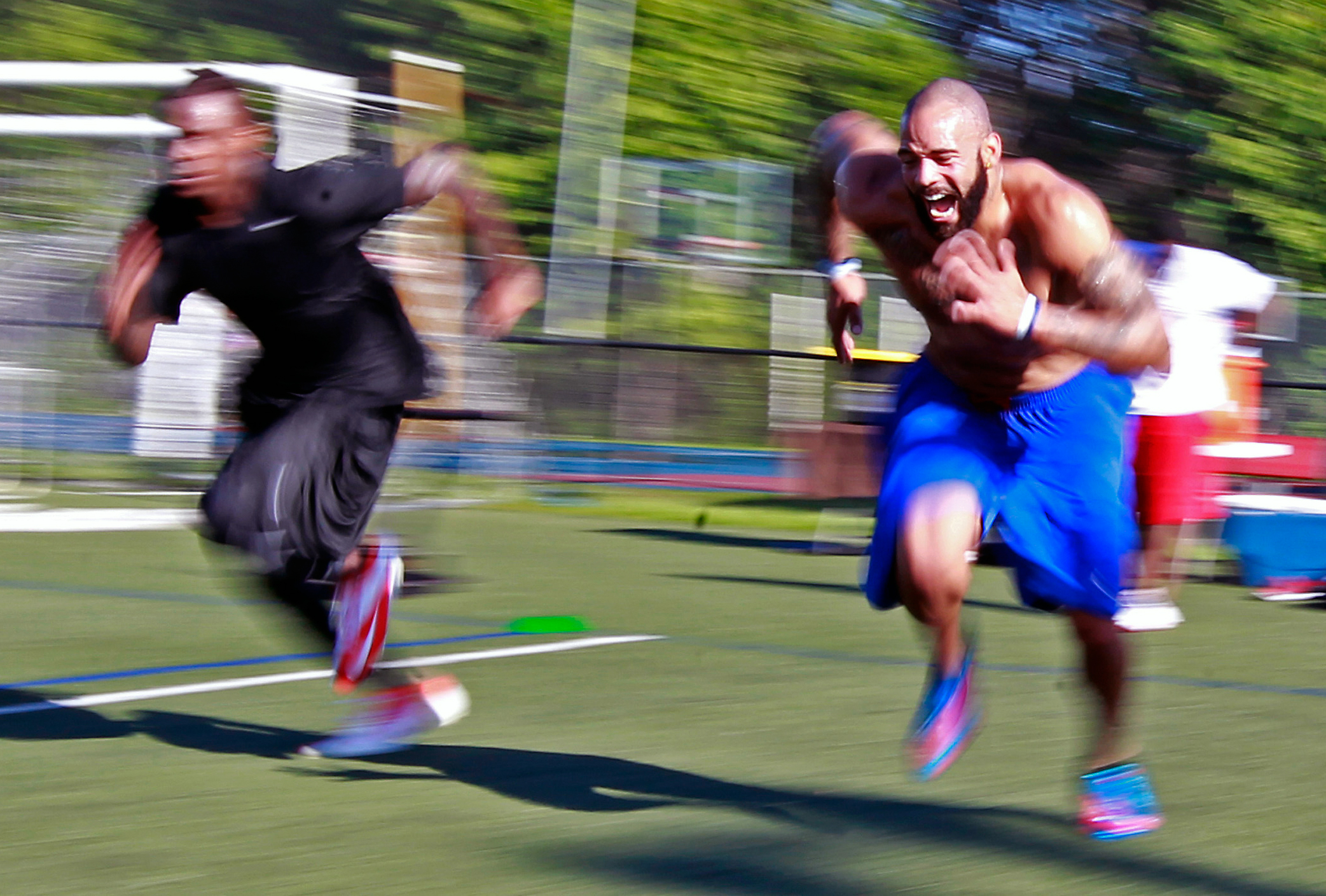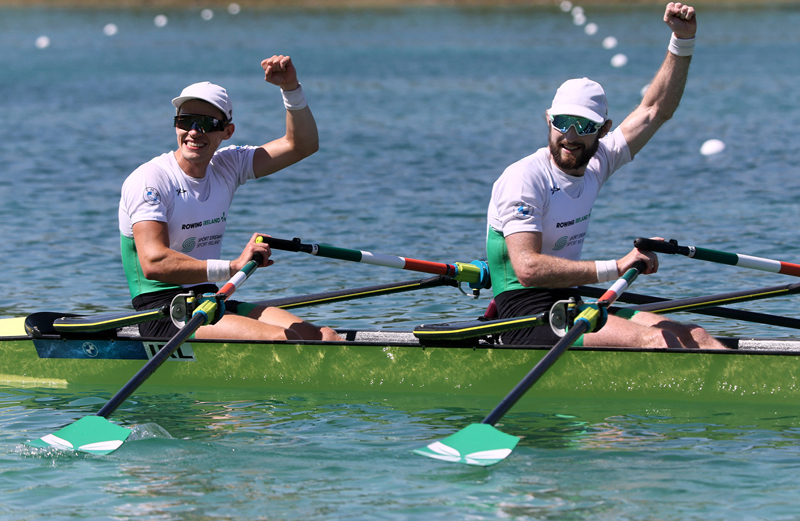You are viewing 1 of your 1 free articles. For unlimited access take a risk-free trial
Interval training: rest hard or rest easy for better results?
Should you rest passively or remain active in between your interval efforts? SPB summarizes the recent research and looks at brand new data
When the topic of interval training comes up, much has been written about how long and how hard each work interval should be, and how many interval repeats are required. That’s not surprising because numerous studies have identified that it’s the bursts of relatively intense activity that are responsible for the endurance benefits interval training brings. What’s often overlooked, however, is the rest interval, which is also an integral part of the interval training process.
Active or passive rest?
Most interval regimes employ passive rest periods in between each effort. However, another though less widely used protocol, is to employ active rest periods. On the face of it, the term ‘active rest’ might seem like a contradiction because it’s not actually rest. However, the exercising body can ‘rest’ and recover, even during periods of light activity. Indeed, some scientists argue that there are some theoretical reasons why active rest between each work interval could be more advantageous than complete or passive rest.
One theoretical benefit of active rest is that activity between efforts produces sustained rhythmic movement in the muscles, stimulating blood flow and so helping to transport nutrients to and metabolic by-products away from recovering muscles. This does not happen when lying, sitting or even standing around motionless between each work interval. Another benefit of being more active during recovery is that the rhythmic contraction of muscles helps to promote lymph drainage, which carries away waste products via the lymph system.
Active benefits
Some of these theoretical benefits have been borne out in scientific research. For example, studies on runners have shown that active recovery immediately after hard intervals encourages recovery and reduces muscle lactate levels faster than complete rest (passive recovery). In one study on two groups of runners performing very intense interval training consisting (6-second bursts with 5-minute rest periods), one group rested completely while a second group exercised at 30% intensity between their intervals (active rest). The active group reduced blood lactate levels faster and achieved a higher average power output throughout their workout(1).
There’s robust evidence that this faster rate of lactate removal is because of the increased flow of blood and oxygen in muscles during active recovery. An elegant experiment using Nuclear Magnetic Resonance Spectroscopy (NMRS) looked at the phosphate ions (from ATP) in the muscle fibers of male long distance runners(2). It showed that during active recovery after hard exercise, the acidity caused by an accumulation of lactic acid dropped six times more quickly compared to passive recovery. The only explanation for this was the increased oxygen supply and efficient removal of lactate as a result of the greater blood flow.
There’s also good evidence from studies on swimmers showing that active recovery helps combat lactate accumulation(3). One study looked at swimmers who performed 10 x 200m flat-out intervals, each separated by 10 minutes of either active or passive rest. In addition, a third group of swimmers recovered passively but with massage also given. The results were pretty unequivocal; the blood levels of lactate at the end of each rest period were lowest after active rest (5.72mmol per litre) and highest when passive rest was taken (10.94mmol per litre). And while the massage helped, it only lowered blood lactate to 7.10mmol per litre (see figure 1). Moreover, the swimmers who rested actively performed significantly better in the subsequent 200m bouts than those who rested passively.
Figure 1: The effects on blood lactate of active rest, passive rest and massage in swimmers
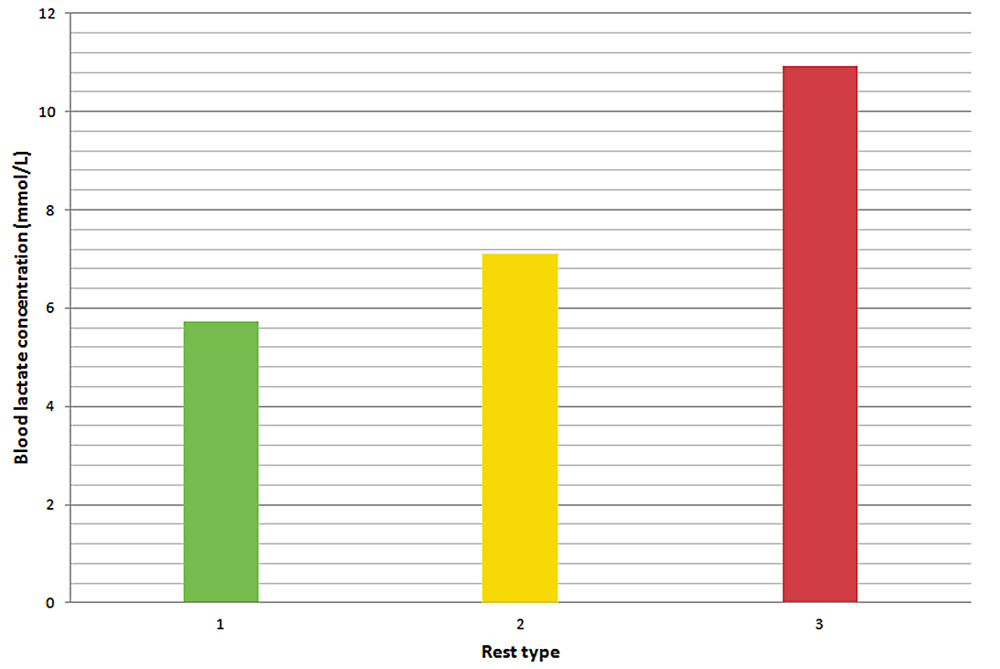
Another study looked at the effects of active vs. passive rest periods within an interval training program carried out by 24 male subjects(4). The subjects were split into three groups: a control group who did no interval training, an active recovery group who rested actively between intervals and a passive group who rested passively between intervals. Before and after the 3-week training program, the researchers measured the maximal oxygen capacities of the subjects as well as their levels of stress hormones. The results showed that it was the active group who responded (ie made gains) in the maximal oxygen uptake test following the 3 weeks of training. However, the downside was that the active recovery seemed to induce more metabolic stress in the subjects.
In favor of passive recovery
Although a number of other studies have shown that active rest is more effective at helping to clear lactate and other by products of exercise from muscles than passive rest, this doesn’t necessarily mean that intervals using active rest produce superior fitness and performance gains. In fact, many studies have found quite the contrary. For example, a German study examined the effects of a 2-week high-intensity interval program on maximal oxygen consumption and parameters of exercise performance in 16 junior triathletes(5). In particular, the researchers wanted to see how the results of this program were influenced by the type of rest the triathletes took in between their work intervals.
The triathletes performed a total of 15 high-intensity interval sessions within three separate 3-day training blocks. Before and one week after the last training session, the athletes performed a graded exercise test to determine their maximum oxygen uptake capacities and a time trial during which power outputs were measured. The results showed that in terms of peak power output during the graded exercise test and time trial performance, all the triathletes made gains, regardless of the type of rest they took during intervals. However, it was the passive group triathletes who showed better endurance gains overall as they were able to sustain higher continual power outputs near their maximum oxygen uptake level.
These results might seem surprising, especially given that the total workload of the passive rest group was less than the active rest group. However, one possible explanation is that this 15-day period of interval training was very intense compared to the triathletes’ normal schedules. The extra work involved in the active rest intervals therefore may have pushed them that bit further into a slightly overtrained state, which resulted in less fitness gains than they might otherwise have achieved.
Another study on rest type during intervals looked at team sports involving repeated short-duration sprints(6). Nine moderately-trained men, most of whom regularly competed in various team sports, performed four repeated-sprint tests on cycle ergometers (six 4-second sprints every 25 seconds), at weekly intervals. In two of the trials, the sprints were separated by 21 seconds of active recovery, which involved cycling at around 32% of VO2max. In the other two trials, the sprints were separated by passive recovery periods, in which the athletes did nothing. The researchers compared the athletes’ performances in the two sets of trials and also analysed samples of thigh muscle tissue before and after each of the four tests to check levels of phosphocreatine, creatine and lactate.
As expected, peak power outputs produced during sprints 2-6 were significantly lower than for the first sprint, regardless of what type of recovery was used. However, there was a significantly lower peak power output and a greater drop in power decrement for the sixth sprint with active recovery than with passive recovery. Moreover, muscle lactate levels were significantly higher and phosphocreatine somewhat lower after the tests involving active rest recovery showing poorer recovery between sprints.
Active vs. passive: reviewing the data
The evidence shows that active rest periods in between interval efforts help with lactate clearance and overall recovery. However, when it comes to key markers of endurance performance, there’s good evidence for ultilizing passive rest period in between efforts. So which method is more effective overall?
Fortunately there have been a couple of good review studies into this question over the past three years or so. A review study identifies all the relevant previous studies on a topic, analyzes the data from those studies and arrives at conclusions based on the pooled data. By bringing together the data from a number of other studies, a review study provides very robust evidence indeed.
In a 2019 review study, a team of Aussie researchers investigated the impact of active vs. passive recovery periods during sprint interval training during both running and cycling(7). Nine studies were included in the review - five examined running and four studies examined cycling – and the typical protocol used in these studies was 10-second efforts with 60-second recoveries. In particular, the researchers looked to see how each mode of resting (active or passive) affected the physiological, perceptual, and performance of the participants.
The results showed that in the running studies, passive recovery induced less physiological stress (lower heart rates, less oxygen consumption), lower ratings of perceived exertion, and reduced performance decrement (ie less decline in sprint times and speed as the interval session progressed) compared to active recovery. In the cycling studies however, the differences between active and passive recoveries were minimal and of little significance.
When summing up their findings, the authors concluded that passive recovery between running repeated-sprint intervals is recommended to reduce performance drop off during the set and minimize physiological stress. However, they also pointed out that active recovery provides greater physiological stress than passive recovery, which therefore maybe a useful training overload strategy to promote adaptation to cope with very high physiological demands – eg in a race situation.
Another review study on this topic was conducted in 2021 by a team of Brazilian researchers(8). The goal was to compare the effect of active versus passive recovery on performance during repeated high-intensity interval exercise. Twenty-six studies were analyzed (17 for power output, nine for repeated-sprint ability and two for distance covered). Four studies found higher performance for passive recovery compared with active recovery. Six out of nine studies reported faster sprinting performance with passive recovery compared to active recovery, while two studies demonstrated that passive recovery resulted in a greater distance covered during intermittent sprint exercise. The overall conclusion was that performing high-intensity interval sessions using passive recovery results in greater performance in that session when compared with active recovery.
Latest findings
The review studies to date strongly suggest that, in runners at least, when maximum performance during an interval training sessions is required, passive resting in between efforts will deliver more than active rest. For cyclists however, these recommendations are much less clear cut. One thing that should be mentioned about the above review studies is that a significant amount of data was derived from studies employing sprint interval training, with sprint intervals durations of 30 seconds or less. In reality however, most endurance athletes performing interval training use longer intervals, typically of 1-4 minutes’ duration, and with good reason: recent research highlighted in this SPB article shows that longer interval lengths (eg 1-4 minutes) result in superior endurance performance gains than shorter lengths of 20-30 seconds(9).
Given this, it’s worth looking at data from a brand new Brazilian study (Brazilians obviously enjoy sports science research!) looking at the Influence of recovery mode on the maximum number of intervals until exhaustion during an aerobic interval training session(10). In this study, the researchers analyzed work capacity, cardiovascular, perceived effort, and neuromuscular responses to an aerobic interval training running session performed until exhaustion with either active or passive recovery. Eight well-trained male endurance runners randomly completed two interval track running sessions until exhaustion consisting of 2-minute bouts at 100% of maximum aerobic speed (MAS – fast; lactate is accumulating quickly at this speed!), with either:
- Two minutes of active recovery at 80% of the velocity associated to the second ventilatory threshold (a moderate but sustainable pace).
- Two minutes of passive recovery – ie merely resting.
During these sessions, oxygen consumption, heart rate, blood lactate, ratings of perceived exertion, and countermovement jump performance were continuously monitored.
The results showed that passive recovery allowed the runners to complete on average 13.9 bouts before exhaustion set in (ie they were unable to sustain the required pace). This compared with only 11.6 bouts when active recovery was used. Importantly, the total time spent over 90% of maximum oxygen consumption (considered an important metric to determine the effectiveness of an endurance training session), blood lactate concentrations, neuromuscular performance, and perceived effort did not differ between the two recovery types.
Implications
The researchers concluded that by using passive recoveries, the runners were able to perform more work intervals overall and therefore, to accumulate a greater interval training volume, thereby increasing the effectiveness of the session. However, they also added a caveat to their conclusion; when the runners used an active recovery, their heart rates stayed higher, indicating a greater physiological load (so-called chronotropic stress).
Being able to train for and adapt to this stress could be useful as it more closely replicates race/competition conditions. That’s because endurance athletes often have to put in a number high-intensity efforts during a race (eg breaking away from the pack) while keeping going. Unless it’s an effort for the finish line, athletes don’t have the luxury of resting passively for one or two minutes after each effort! They need to continue to maintain a fast enough pace to capitalize on their surge. In this way therefore, active recoveries during longer intervals could play a valuable role in conditioning endurance athletes to race conditions.
What’s best for me?
What overall conclusions on rest types can we reach given the above data? Here are some tips to help you decide which recovery mode might work be for you, and when:
- The first thing to say is that it’s not an either/or choice. In some circumstances, intervals using passive recoveries will suit your needs best; in others, active recoveries may be more suitable.
- If you want to ensure you complete an interval session with less performance decline and fatigue towards the end of the session, passive rest periods are likely to be more productive.
- If you are in a period of heavy training, intervals using passive rest periods may be preferable by maximizing quality and reducing overall loading, thus minimizing the chance of become excessively fatigued.
- The use of active rest periods, particularly when undertaking longer aerobic intervals, more closely simulates the demands of racing, and could therefore be a useful sharpening or preparatory tool in the run up to a race.
- Active rest periods will involve a greater calories burn, so could be preferable for athletes where weight reduction or management is a concern.
References
1. Med Sci Sports Exerc. 1996 Apr;28(4):450-6
2. NMR Biomed. 1996 Feb;9(1):13-9
3. J Sports Med Phys Fitness. 2012 Apr;52(2):122-7
4. Int J Sports Med 2014; 35(07): 583-589
5. J Strength Cond Res. 2013 May;27(5):1384-93
6. Med Sci Sports Exerc, vol 38, no 8, pp1492-1499, 2006
7. J Sports Med Phys Fitness. 2019 Sep;59(9):1492-1502
8. J Sports Med Phys Fitness. 2021 Apr;61(4):562-570
9. Scand J Med Sci Sports. 2022 Oct 31. doi: 10.1111/sms.14251. Online ahead of print
10. J Strength Cond Res. 2023 Feb 1. doi: 10.1519/JSC.0000000000004463. Online ahead of print
Newsletter Sign Up
Testimonials
Dr. Alexandra Fandetti-Robin, Back & Body Chiropractic
Elspeth Cowell MSCh DpodM SRCh HCPC reg
William Hunter, Nuffield Health
Further reading
Newsletter Sign Up
Coaches Testimonials
Dr. Alexandra Fandetti-Robin, Back & Body Chiropractic
Elspeth Cowell MSCh DpodM SRCh HCPC reg
William Hunter, Nuffield Health
Keep up with latest sports science research and apply it to maximize performance
Today you have the chance to join a group of athletes, and sports coaches/trainers who all have something special in common...
They use the latest research to improve performance for themselves and their clients - both athletes and sports teams - with help from global specialists in the fields of sports science, sports medicine and sports psychology.
They do this by reading Sports Performance Bulletin, an easy-to-digest but serious-minded journal dedicated to high performance sports. SPB offers a wealth of information and insight into the latest research, in an easily-accessible and understood format, along with a wealth of practical recommendations.
*includes 3 coaching manuals
Get Inspired
All the latest techniques and approaches
Sports Performance Bulletin helps dedicated endurance athletes improve their performance. Sense-checking the latest sports science research, and sourcing evidence and case studies to support findings, Sports Performance Bulletin turns proven insights into easily digestible practical advice. Supporting athletes, coaches and professionals who wish to ensure their guidance and programmes are kept right up to date and based on credible science.
